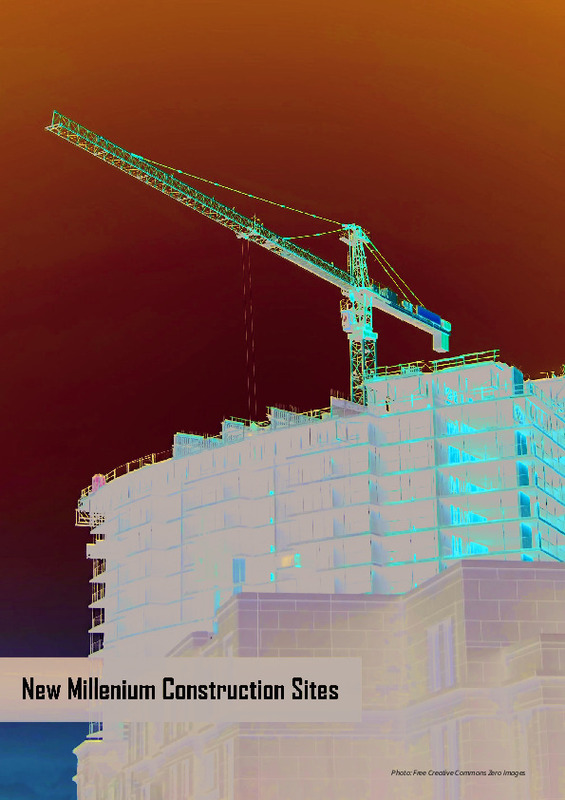JavaScript is disabled for your browser. Some features of this site may not work without it.
Buscar en RiuNet
Listar
Mi cuenta
Estadísticas
Ayuda RiuNet
Admin. UPV
New millennium construction sites: an integrated methodology for the sustainability assessment
Mostrar el registro sencillo del ítem
Ficheros en el ítem
| dc.contributor.author | Pennacchia, Elisa
|
es_ES |
| dc.contributor.author | Gugliermetti, Luca
|
es_ES |
| dc.contributor.author | Di Matteo, Umberto
|
es_ES |
| dc.contributor.author | Cumo, Fabrizio
|
es_ES |
| dc.date.accessioned | 2024-01-03T11:08:46Z | |
| dc.date.available | 2024-01-03T11:08:46Z | |
| dc.date.issued | 2023-12-21 | |
| dc.identifier.uri | http://hdl.handle.net/10251/201384 | |
| dc.description.abstract | [EN] According to the Global Status report for Buildings and Construction, the building and construction sector accounts for 36% of global energy consumption and 39% of energy-related carbon dioxide (CO2) emissions. Specifically, the construction site represents one of the most significant sources of environmental impact, making it a pivotal element in achieving sustainability within the construction industry. The construction process and maintenance activities on buildings are, therefore, critical phases in which the construction industry is tasked with finding a balance between economic development, social well-being, and environmental protection to ensure a sustainable future for both current and future generations. To promote a construction model focused on environmental, economic, and social sustainability, this paper introduces a Performance Protocol. This protocol serves as an operational tool that allows both the construction company and the contracting authority to manage these aspects throughout the entire construction process. Digital technologies such as BIM and Digital Twin can take advantage of such model to integrate and develop sustainability analysis and simulation during the entire life cycle of a building. The use of digital tools is one of the challenges for the future of the built environment that needs to address not only the issues related to costs and management but also considering the social and environmental aspects of sustainable development. | es_ES |
| dc.language | Inglés | es_ES |
| dc.publisher | Universitat Politècnica de València | es_ES |
| dc.relation.ispartof | VITRUVIO - International Journal of Architectural Technology and Sustainability | es_ES |
| dc.rights | Reconocimiento - No comercial (by-nc) | es_ES |
| dc.subject | Sustainability | es_ES |
| dc.subject | Construction sites | es_ES |
| dc.subject | Environmental protection | es_ES |
| dc.subject | Digitalization | es_ES |
| dc.subject | Ecological and digital transition | es_ES |
| dc.title | New millennium construction sites: an integrated methodology for the sustainability assessment | es_ES |
| dc.type | Artículo | es_ES |
| dc.identifier.doi | 10.4995/vitruvio-ijats.2023.20532 | |
| dc.rights.accessRights | Abierto | es_ES |
| dc.description.bibliographicCitation | Pennacchia, E.; Gugliermetti, L.; Di Matteo, U.; Cumo, F. (2023). New millennium construction sites: an integrated methodology for the sustainability assessment. VITRUVIO - International Journal of Architectural Technology and Sustainability. 8(2):102-115. https://doi.org/10.4995/vitruvio-ijats.2023.20532 | es_ES |
| dc.description.accrualMethod | OJS | es_ES |
| dc.relation.publisherversion | https://doi.org/10.4995/vitruvio-ijats.2023.20532 | es_ES |
| dc.description.upvformatpinicio | 102 | es_ES |
| dc.description.upvformatpfin | 115 | es_ES |
| dc.type.version | info:eu-repo/semantics/publishedVersion | es_ES |
| dc.description.volume | 8 | es_ES |
| dc.description.issue | 2 | es_ES |
| dc.identifier.eissn | 2444-9091 | |
| dc.relation.pasarela | OJS\20532 | es_ES |








